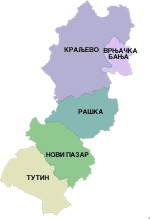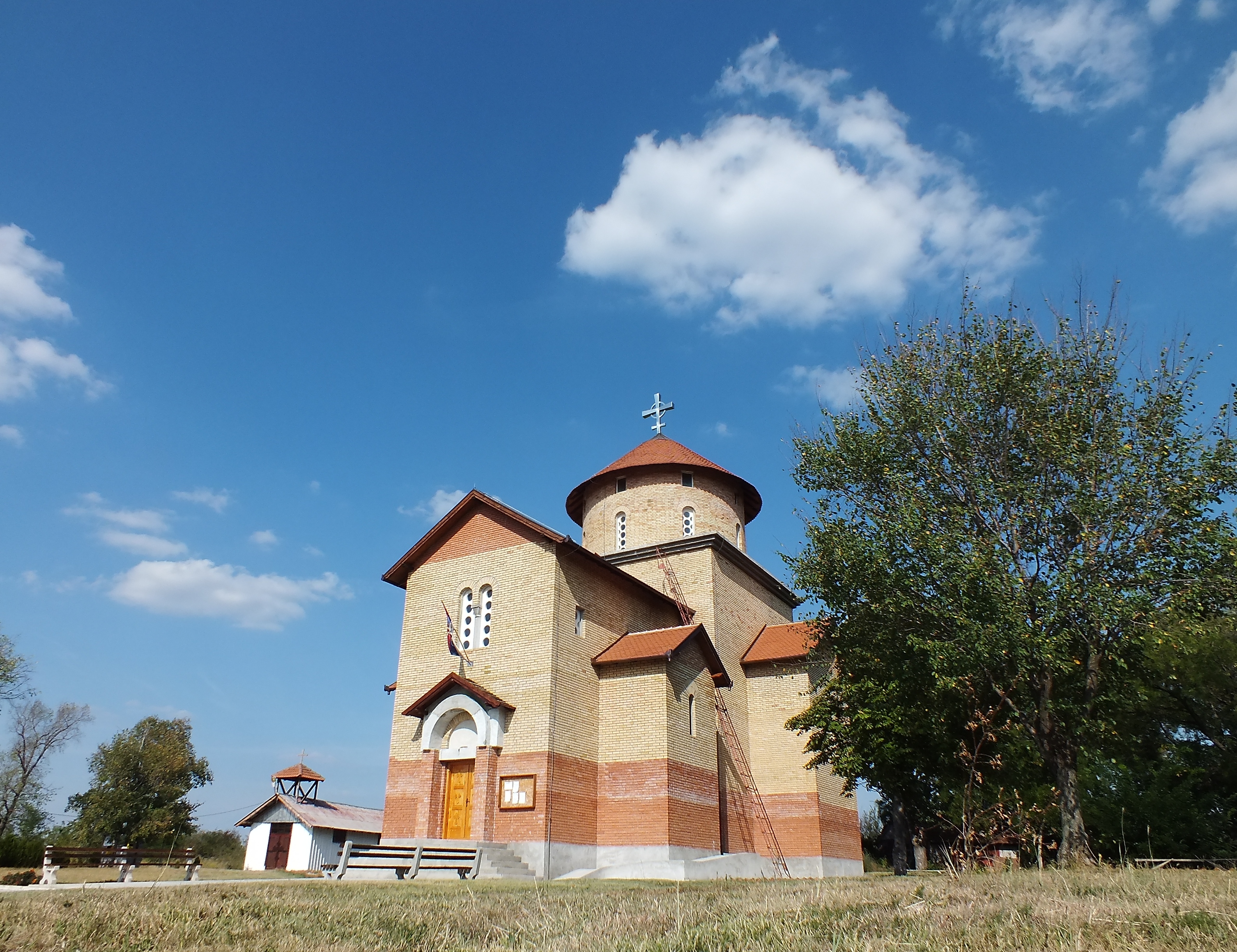|
Vrnjačka Banja
Vrnjačka Banja ( sr-cyr, Врњачка Бања) is a town and municipality located in the Raška District of central Serbia. The population of the town is 10,065 inhabitants, while the population of the municipality is 27,527 inhabitants. Vrnjačka Banja has many hot springs with temperatures measuring exactly that of the human body (37.5 degrees Celsius). Settlements Aside from the town of Vrnjačka Banja, the municipality includes the following settlements: * Vraneši * Vrnjci * Vukušica * Goč * Gračac * Lipova * Novo Selo * Otorci * Podunavci * Rsavci * Ruđinci * Stanišinci * Štulac Demographics According to the last official census done in 2011, the municipality of Vrnjačka Banja has 27,527 inhabitants. Population density on the territory of the municipality is 115.2 inhabitants per square kilometer. Ethnic groups Most of its population are ethnic Serbs (96.2%) and 36.6% of the municipality’s population is urban. The ethnic composition of the munic ... [...More Info...] [...Related Items...] OR: [Wikipedia] [Google] [Baidu] |
Municipalities And Cities Of Serbia
The municipalities and cities ( sr, општине и градови, opštine i gradovi) are the second level administrative subdivisions of Serbia. The country is divided into 145 municipalities ( sr-Latn, opštine, singular: ; 38 in Southern and Eastern Serbia, 42 in Šumadija and Western Serbia, 37 in Vojvodina and 28 in Kosovo and Metohija) and 29 cities (Serbian Latin: , singular: ; 9 in Southern and Eastern Serbia, 10 in Šumadija and Western Serbia, 8 in Vojvodina and one in Kosovo and Metohija), forming the basic level of local government. Municipalities and cities are the administrative units of Serbia, and they form 29 districts in groups, except the City of Belgrade which is not part of any district. A city may and may not be divided into city municipalities ( sr-Latn, gradske opštine, singular: ) depending on their size. Currently, there are six cities in Serbia with ''city municipalities'': Belgrade, Novi Sad, Niš, Požarevac, Užice and Vranje comprise several ... [...More Info...] [...Related Items...] OR: [Wikipedia] [Google] [Baidu] |
List Of Cities In Serbia
, plural: ) is elected through popular vote, elected by their citizens in local elections. Also, the presidents of the municipalities are often referred to as "mayors" in everyday usage. There are 29 cities (, singular: ), each having an assembly and budget of its own. As with a municipality, the territory of a city is composed of a city proper and surrounding villages (e.g. the territory of the City of Subotica is composed of the Subotica town and surrounding villages). The capital Belgrade is the only city on the level of a district. All other cities are on the municipality level and are part of a district. ;City municipalities The city may or may not be divided into ''city municipalities''. Five cities (Belgrade, Niš, Požarevac, Vranje and Užice) comprise several city municipalities. Competences of cities and city municipalities are divided. The city municipalities of these six cities also have their assemblies and other prerogatives. The largest city municipality by number ... [...More Info...] [...Related Items...] OR: [Wikipedia] [Google] [Baidu] |
Montenegrins Of Serbia
The Montenegrins of Serbia ( sr, Црногорци у Србији, Crnogorci u Srbiji) are a national minority in the country. According to the 2011 census, there are 38,527 citizens of recent Montenegrin descent, Montenegrin Serbs, or ethnic Montenegrins in Serbia. They are the sixth largest ethnic community in the Vojvodina province. Geography The largest concentration of Montenegrins in Vojvodina could be found in the municipalities of Vrbas (24.79%), Mali Iđoš (20.83%), and Kula (16.34%). Settlements in Vojvodina with an absolute or relative Montenegrin majority are: Lovćenac in the Mali Iđoš municipality with 56.86% Montenegrins, Kruščić in the Kula municipality with 32.64%, and Montenegrins in Savino Selo in the Vrbas municipality with 38.20% Montenegrins. Formerly, the village of Bačko Dobro Polje in the Vrbas municipality also had a Montenegrin majority (According to the 1971 census, Montenegrins comprised 55.39% of population of this village, while acco ... [...More Info...] [...Related Items...] OR: [Wikipedia] [Google] [Baidu] |
Romani People In Serbia
Romani people, or Roma ( sr, Роми, Romi), are the third largest ethnic group in Serbia, numbering 147,604 (2.1%) according to the 2011 census. However, due to a legacy of poor birth registration and some other factors, this official number is likely underestimated. Estimates that correct for undercounting suggest that Serbia is one of countries with the most significant populations of Roma people in Europe at 250,000-500,000. Anywhere between 46,000 to 97,000 Roma are internally displaced from Kosovo after 1999. Another name used for the community is ''Cigani'' ( sr-Cyrl, Цигани). They are divided into numerous subgroups, with different, although related, Romani dialects and history. Subgroups Main sub-groups include "Turkish Gypsies" (''Turski Cigani''), "White Gypsies" (''Beli Cigani''), "Wallachian Gypsies" (''Vlaški Cigani'') and "Hungarian Gypsies" (''Mađarski Cigani''), as studied by scholar Tihomir Đorđević (1868–1944). * Wallachian Roma. Migrated fro ... [...More Info...] [...Related Items...] OR: [Wikipedia] [Google] [Baidu] |
Serbs
The Serbs ( sr-Cyr, Срби, Srbi, ) are the most numerous South Slavic ethnic group native to the Balkans in Southeastern Europe, who share a common Serbian ancestry, culture, history and language. The majority of Serbs live in their nation state of Serbia, as well as in Bosnia and Herzegovina, Croatia, Montenegro, and Kosovo. They also form significant minorities in North Macedonia and Slovenia. There is a large Serb diaspora in Western Europe, and outside Europe and there are significant communities in North America and Australia. The Serbs share many cultural traits with the rest of the peoples of Southeast Europe. They are predominantly Eastern Orthodox Christians by religion. The Serbian language (a standardized version of Serbo-Croatian) is official in Serbia, co-official in Kosovo and Bosnia and Herzegovina, and is spoken by the plurality in Montenegro. Ethnology The identity of Serbs is rooted in Eastern Orthodoxy and traditions. In the 19th century, the Serbia ... [...More Info...] [...Related Items...] OR: [Wikipedia] [Google] [Baidu] |
Raski District
{{Brzeg-geo-stub ...
Raski is a village in the administrative district of Gmina Lewin Brzeski, within Brzeg County, Opole Voivodeship, in southwestern Poland. References Raski Raski is a village in the administrative district of Gmina Lewin Brzeski, within Brzeg County, Opole Voivodeship Opole Voivodeship, or Opole Province ( pl, województwo opolskie ), is the smallest and least populated voivodeship (province) of Po ... [...More Info...] [...Related Items...] OR: [Wikipedia] [Google] [Baidu] |
Štulac (Vrnjačka Banja)
Štulac is a village in the municipality of Vrnjačka Banja, Serbia Serbia (, ; Serbian language, Serbian: , , ), officially the Republic of Serbia (Serbian language, Serbian: , , ), is a landlocked country in Southeast Europe, Southeastern and Central Europe, situated at the crossroads of the Pannonian Bas .... According to the 2011 census, the village has a population of 1,185 people.Popis stanovništva, domaćinstava i Stanova 2002. Knjiga 1: Nacionalna ili etnička pripadnost po naseljima. Republika Srbija, Republički zavod za statistiku Beograd 2003. References Populated places in Raška District {{RaškaRS-geo-stub ... [...More Info...] [...Related Items...] OR: [Wikipedia] [Google] [Baidu] |
Stanišinci
Stanišinci is a village in the municipality of Vrnjačka Banja, Serbia Serbia (, ; Serbian language, Serbian: , , ), officially the Republic of Serbia (Serbian language, Serbian: , , ), is a landlocked country in Southeast Europe, Southeastern and Central Europe, situated at the crossroads of the Pannonian Bas .... According to the 2011 census, the village has a population of 245 people.Popis stanovništva, domaćinstava i Stanova 2002. Knjiga 1: Nacionalna ili etnička pripadnost po naseljima. Republika Srbija, Republički zavod za statistiku Beograd 2003. References Populated places in Raška District {{RaškaRS-geo-stub ... [...More Info...] [...Related Items...] OR: [Wikipedia] [Google] [Baidu] |
Ruđinci
Ruđinci is a village in the municipality of Vrnjačka Banja, Serbia Serbia (, ; Serbian language, Serbian: , , ), officially the Republic of Serbia (Serbian language, Serbian: , , ), is a landlocked country in Southeast Europe, Southeastern and Central Europe, situated at the crossroads of the Pannonian Bas .... According to the 2011 census, the village has a population of 2,466 people.Popis stanovništva, domaćinstava i Stanova 2002. Knjiga 1: Nacionalna ili etnička pripadnost po naseljima. Republika Srbija, Republički zavod za statistiku Beograd 2003. References Populated places in Raška District {{RaškaRS-geo-stub ... [...More Info...] [...Related Items...] OR: [Wikipedia] [Google] [Baidu] |
Rsavci
Rsavci is a village in the municipality of Vrnjačka Banja, Serbia Serbia (, ; Serbian language, Serbian: , , ), officially the Republic of Serbia (Serbian language, Serbian: , , ), is a landlocked country in Southeast Europe, Southeastern and Central Europe, situated at the crossroads of the Pannonian Bas .... According to the 2011 census, the village has a population of 334 people.Popis stanovništva, domaćinstava i Stanova 2002. Knjiga 1: Nacionalna ili etnička pripadnost po naseljima. Republika Srbija, Republički zavod za statistiku Beograd 2003. References Populated places in Raška District {{RaškaRS-geo-stub ... [...More Info...] [...Related Items...] OR: [Wikipedia] [Google] [Baidu] |
Podunavci
Podunavci is a village in the municipality of Vrnjačka Banja, Serbia Serbia (, ; Serbian language, Serbian: , , ), officially the Republic of Serbia (Serbian language, Serbian: , , ), is a landlocked country in Southeast Europe, Southeastern and Central Europe, situated at the crossroads of the Pannonian Bas .... According to the 2011 census, the village has a population of 1,502 people.Popis stanovništva, domaćinstava i Stanova 2002. Knjiga 1: Nacionalna ili etnička pripadnost po naseljima. Republika Srbija, Republički zavod za statistiku Beograd 2003. References Populated places in Raška District {{RaškaRS-geo-stub ... [...More Info...] [...Related Items...] OR: [Wikipedia] [Google] [Baidu] |
Otroci, Vrnjačka Banja
Otroci is a village in the municipality of Vrnjačka Banja, Serbia Serbia (, ; Serbian language, Serbian: , , ), officially the Republic of Serbia (Serbian language, Serbian: , , ), is a landlocked country in Southeast Europe, Southeastern and Central Europe, situated at the crossroads of the Pannonian Bas .... According to the 2011 census, the village has a population of 498 people.Popis stanovništva, domaćinstava i Stanova 2002. Knjiga 1: Nacionalna ili etnička pripadnost po naseljima. Republika Srbija, Republički zavod za statistiku Beograd 2003. References Populated places in Raška District {{RaškaRS-geo-stub ... [...More Info...] [...Related Items...] OR: [Wikipedia] [Google] [Baidu] |



